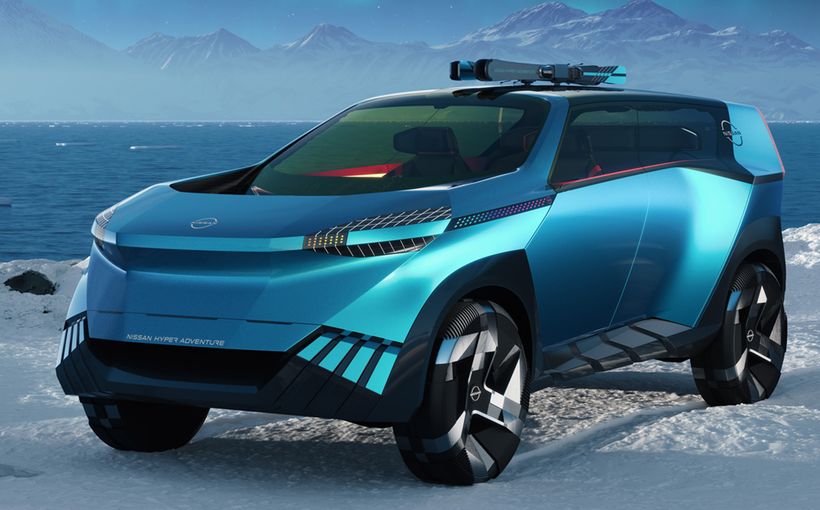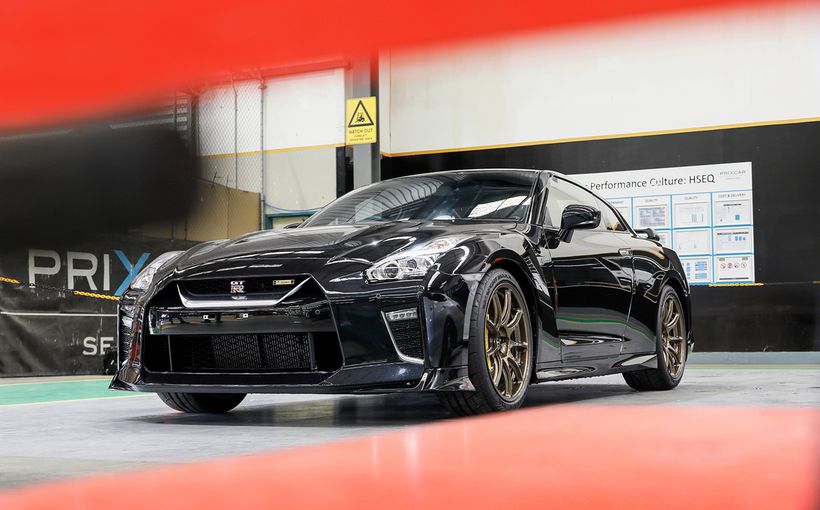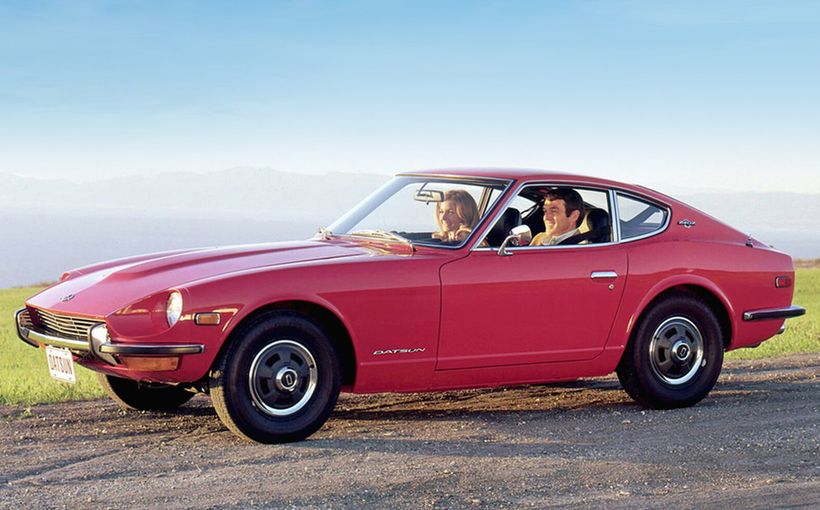Datsun Fairlady: How Japan Redefined 1960s Sports Car Racing

The Datsun Fairlady was Japan’s first serious crack at building a traditional sports car for the masses, as its burgeoning car industry challenged well-established brands in mature export markets. And it was largely through competition success at home and abroad that this oriental roadster ultimately changed perceptions of British and European superiority in production sports cars.
Like its smaller-engined S211 and SPL212-213 predecessors, there was nothing radical about the SP310 (RHD) and SPL310 (LHD) Fairlady 1500 when it was launched in 1962, even though it was widely considered to be the first true Datsun ‘sports’ car. It was also the first of three variants to be sold in Australia.
In overall design and appearance it was disarmingly conventional, with a kerb weight of around 900kg, body-on-frame construction, double wishbone front suspension, a leaf-sprung live rear axle, four-wheel drum brakes, drop-top cockpit and modest styling. However, it was keenly priced and generous with standard features, along with engineering refinement that was a cut above most British rivals.
From that first single-carb 1.5 litre Fairlady (later production had twin carbs) evolved a more powerful 1.6 litre SP311/SPL311 version in 1965 with front disc brakes, before the third and final SR311/SRL311 arrived in 1967, with a potent SOHC 2.0 litre engine, five-speed gearbox, 150bhp and a top speed of 125mph (200km/h) which at the time was regarded as near-supercar performance.
It was these three models (the Fairlady name was dropped in numerous export markets but we’ll use it here) that laid the foundation for many factory-backed race and rally programs that followed, which instilled a motor sport-based performance culture within Nissan that still thrives today.

The Japanese Connection: A Winner First Time Out
The Datsun Fairlady’s destiny as a global sports car success story (Datsun was Nissan’s export brand at the time) seemed assured from the moment it appeared on the international motor sport stage in 1963, where it raced to what has become a legendary debut victory for Nissan.
The event was the first Japanese Grand Prix held over the weekend of May 3-4. This was the first international motor race meeting to be held in Japan, so it was an event of huge national significance watched by a massive crowd claimed to be as large as 200,000 people.
The location was the recently completed 6.0km Suzuka circuit near Nagoya. Given the enormous attendance and the event’s importance, the atmosphere was electric as some of the world’s most famous sporting marques were about to make history.
The Grand Prix was held exclusively for sports and GT cars, competing in different classes across the weekend. Sunday’s main event featured such classics as the Porsche 365 Carrera, Aston Martin DB4, Ferrari 250LM and the brilliant Lotus 23, which dominated proceedings by claiming first, second and third placings for Lotus boss Colin Chapman.

Attracting just as much attention was the Touring Class (1301-2500cc) race which was a supporting event for production sports cars held on the Saturday. Not surprisingly this attracted a strong entry of British marques which at the time were still the global benchmark for traditional open-top sports cars.
And in amongst all the Triumph TR2s, TR3s and TR4s, MGAs and MGBs was a lone Fairlady 1500 (SP310). The silver No.39 Datsun roadster was owned by local sports car enthusiast Genichiro Tawara who had bought one of the first examples, with the primary goal of trying to win Japan’s first Grand Prix event.
He had approached Nissan for support but the company was so new to circuit racing it could offer little help. His sponsorship was minimal, with the only decals on the car belonging to Tokyo Nissan (a dealership with a strong sporting pedigree), the SCCJ (Sporting Car Club of Japan) and NGK spark plugs.
Tawara fitted a roll-hoop and a lower windscreen made from Perspex (to reduce weight and aero drag) along with removal of the rear seat to save more weight. He also conducted his own test sessions at Suzuka to learn the challenging circuit - with driving tips from SCCJ members - and experiment with different suspension settings.
When the big day arrived Tawara and his Fairlady 1500 cemented their place in Japanese motor sport history, leaving a stunned field behind them as they raced to an emphatic victory six seconds clear of the second-placed Triumph. He also set the fastest lap of the race.

The huge partisan crowd was delirious with excitement as the British marques were expected to be far superior to the local product, but in a fair fight the Fairlady had shown she was more than their equal.
It was a glittering achievement, not only for Nissan but also the Japanese motor industry at the start of an unforgettable decade that would see its exports reach stratospheric numbers around the world.
Not surprisingly, Nissan launched a big advertising campaign built around the Suzuka win, as Tawara and his Fairlady made guest appearances at dealerships across the country. The resulting boost in showroom sales showed Nissan the positive effect that motor sport success had on car-buying decisions, planting the first seeds of its enduring motor sport culture.
Nissan also helped Tawara to establish Sports Car Club Nissan (SCCN) and retained his services to spearhead its factory-backed race and rally programs across the globe.
Proof of how significant that first Japanese Grand Prix victory was to Nissan is that it still owns Tawara’s Fairlady 1500. Thankfully it remains unrestored and lovingly preserved in its original condition, complete with the decals and race numbers it carried to victory on that historic day.

The USA Connection: King of Production Sports
Connecticut-based Bob Sharp was arguably the most successful Fairlady racer in the US, as he competed in all three variants - 1500, 1600 and 2000. His many successes in Sports Car Club of America (SCCA) competition throughout the 1960s built credibility and excitement for the Nissan brand in its most lucrative export market.
Sharp started his Datsun campaign in 1964 driving a SPL310 Fairlady 1500 (or Datsun 1500 in the US) and by the time he’d finished racing the Japanese roadsters in 1969, after six memorable seasons, he’d become one of Nissan’s favourite sons and amassed an impressive trophy haul.
From 1964, all SCCA regional champions would meet for the American Road Race of Champions (ARRC) run-offs at a different venue each year to decide the SCCA national champions. Under this format Sharp claimed his first North-East Division title with the 1500 in 1965 and finished third in the ARRC.
His most successful season came in 1967, when he won both the North-East Division and ARRC run-offs at Daytona in the latest SPL311 Fairlady 1600 (or Datsun Sports 1600 in the US). It was Sharp’s first national driver’s title and Nissan’s first US championship win - a landmark victory.

In 1968 Sharp maintained his momentum with the definitive SRL311 Fairlady 2000 (or Datsun 2000 Sports) in C Production, winning the North-East Division against quality Porsche, Triumph, Lotus and Sunbeam Tiger competition. He did it again in 1969 in D Production, driving one of a handful of factory lightweight 2000s before moving onto the new 240Z.
Prior to 1965, the Datsun Fairlady was a rare sight on US tracks, but Sharp’s immediate success enticed rivals in Triumph Spitfires and TRs, Austin-Healey Sprites, MGBs, MG Midgets and Morgans to consider the new Japanese roadster as a viable alternative to their traditional British fare.
Sharp’s Datsuns were always well prepared, within the strict limits of the production-based rules, with quality engine and suspension tuning and simple weight trimming by removal of bumpers, window glass and interior fittings. The heavy standard steel wheels were also replaced with lightweight alloys and a stout roll hoop fitted.
The result of these pioneering efforts with the Fairlady 1500 was increased support from Nissan; not only for Sharp but also the growing number of Datsun racers across the country who benefitted from the factory’s growing technical and financial support.

Another prominent Fairlady campaigner was Californian-based Pete Brock (Brock Racing Enterprises) who achieved considerable success with the SRL311 2000 model in the late 1960s, before production ceased and (like Bob Sharp) attention turned to the new 240Z.
BRE was renowned for its immaculate preparation and it showed in 1969 when Frank Monise in a ‘BRE 2000’ set numerous lap records on his way to winning D Production in the SCCA’s Southern Pacific Division.
A second BRE 2000 came on line mid-season driven by John Morton, who scored enough points to join Monise at the 1969 ARRC run-offs at Daytona. The Brock cars dominated qualifying but both retired early with fried pistons, after a rare miscalculation by the team on carburettor settings meant they ran too lean. Even so, the D Production national title still went to Nissan thanks to Datsun dealer Jack Scoville in one of the factory lightweight 2000s.
BRE’s second and final season with the SRL311s produced more success, with John McComb easily winning D Production in the Mid-West Division. Morton, who found the going much tougher in C Production against factory-backed Porsches and Lotus Elans, scored enough points to qualify for the ARRC run-offs at Road Atlanta, where he switched to the new 240Z to convincingly win the national C Production title.
Although McComb retired with axle trouble at the ARRC, the national D Production championship still went to Datsun with SRL311 roadsters filling the first four places (who could have predicted that back in 1964!) in a fitting finale for the Fairlady in SCCA competition.

The Australian Connection: The ProdSports Racer’s Best Friend
The Fairlady also proved a popular choice for production (Marque) sports car and Improved Production sports car racers in Australia, attracting a broad spectrum of drivers from the weekend club racer to the factory-backed professional. It also responded well to performance upgrades.
The biggest name to campaign Datsuns in the 1960s and early 1970s was Doug Whiteford. The multiple Australian Grand Prix winner played an important role in enhancing Datsun’s image, with sparkling performances in a variety of factory-backed sedans in the annual Bathurst 500/1000.
Under the Datsun Racing Team banner, run by 1960 Armstrong 500 winner John Roxburgh, Whiteford also campaigned SP311 1600 and SR311 2000 roadsters. This created great interest at a time when production-based sports cars were at their peak of popularity in Australia, particularly amongst young drivers.
Some of the Fairlady’s most impressive results came in the annual 6 Hour and 12 Hour clashes at Surfers Paradise Raceway. In these events the factory-backed Datsuns were sharing the track with some of the world’s fastest purpose-built competition cars, yet managed to score results that defied their humble road-going origins.

Whiteford teamed up with Roxburgh and Edward Colwell in a Fairlady 1600 for the 1966 12 Hour, claiming second in class (Improved Production under 2000cc) and eighth outright. The same model was even more impressive the following year, with Whiteford/Roxburgh winning their class and finishing fourth outright, beaten only by a Porsche 906 Spyder, Lola T70 and the winning Ferrari 250LM.
The Datsun Racing Team’s switch to the latest 2000 Sports in 1968 for the 6 Hour race produced another stunning result, with Whiteford, Roxbugh and fellow 1960 Armstrong 500 winner Frank Coad teaming up to again win the class (Sports Racing 2000). They also finished third outright, behind a Lotus Elan and Ferrari 250LM.
For what was primarily designed as an affordable road-going sports car, the speed and endurance shown by the Fairlady against such thoroughbreds from Britain and Europe over such long distances carried huge credibility for Datsun in Australia.
It’s no wonder these tough and willing Japanese roadsters won so many friends and provided spirited competition for well-established British marques in the late 1960s, when Ross Bond’s legendary Austin Healey 3000 was considered the performance benchmark.

Case Study: David Mingay’s SR311 2000 Sports
A good example of the breed was the 2000 Sports which David Mingay and Richard Carter developed into one of the quickest Improved Production sports cars in Australia. Mingay had bought the Datsun as his daily driver in 1968 but soon caught the racing bug, fitting a shorter diff ratio and a set of R7 Dunlop race tyres.
Promising early results convinced Mingay that trying to topple Bond’s Healey was a goal worth pursuing. He was soon joined in his quest by friend and future national Formula Ford champion Richard Carter, who abandoned his outdated MGA to share in the driving and development of the promising Japanese roadster.
A set of Bo Seton’s hand-crafted exhaust headers, a wilder camshaft grind and a pair of 45mm side-draught Webers soon followed, along with lowered suspension, a thicker front sway bar, a low profile Perspex windscreen and wheel arch flares to shroud big 14 x 8.0-inch wide rims wearing Firestone Indy racing tyres.

Minimising weight also became a priority within the production-based rules, with removal of heavy bolt-on items like bumper bars, window glass etc. Mingay and Carter were also experimenting with a front spoiler like the US cars, to reduce front-end lift and drag at high speeds.
By 1969 their Datsun roadster had become an increasing threat to Bond’s ‘big’ Healey, finishing third and setting fastest lap in a fabulous dice with Bond and Paul Meyer’s Lotus Elan at Catalina Park. Engine development had seen outputs rise to a reported 170bhp at 7000rpm with 12:1 compression and an impressive top speed of 131mph (211km/h) recorded on Conrod Straight at Bathurst’s Easter meeting.
It was around this time of the car’s development that journalist/racer Peter Wherrett, who would later find TV fame as host of the ABC’s Torque motoring show, conducted a track test at Sydney’s Oran Park for Racing Car News (November 1969 issue) and came away impressed:

“It understeers on moderate throttle and begins to oversteer as power increases. So you set it up wide and let it understeer to the apex, squeezing in more power towards the exit. The understeer comes off and the car tightens its line to eject on mild oversteer with no corrective lock needed. The power is positive and it is there all the way from 4000 to 6500rpm, which is the maximum limit (even though it showed 7000rpm on the magazine’s spec sheet).
“It was all over far too soon. My best lap of 53 secs left me slightly stunned. It was so easy I could not accept it. But it certainly indicated two things very clearly. Firstly that Datsun have a winner in the SR311, whether it be for road or track, and secondly that the money spent by David Mingay and Richard Carter has been worth every penny. It is the most ‘more-ish’ car I have driven this year. Thoroughly delightful, fast, safe and bags of fun.”
A view that was shared no doubt by the many drivers who raced the Fairlady, be it Australia, the USA or indeed that history-making first victory in Japan.









